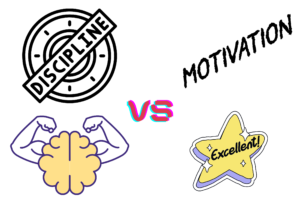In our fast-changing business world, the idea of workspace empowerment is seeing significant shifts. It’s not just about physical spaces changing from regular offices to digital, remote work areas. There’s also a cultural shift. We’re creating a culture where the workers have more power. This is a key factor in making spaces where creativity and hard work can grow. Businesses must understand how fostering the culture of workplace empowerment, fostering creativity, and increasing productivity are connected. This can help them find their way in the complex landscape of today’s work environments.
Techniques for Increasing Workplace Empowerment
Developing a workforce needs a multidimensional strategy. Being free to make choices that impact their work is essential for creating a sense of accountability and ownership among employees. Ensuring team members have access to information and the resources they need to do their jobs well will help the organization achieve its objectives. Supervisors have the ability to empower their teams through :
- Promoting candid feedback and dialogue.
- Establishing precise standards and giving the resources required to meet them.
- Praising and honoring accomplishments and contributions.
The Development of the workplace empowerment
There needed to be more room for individual independence in the rigid hierarchies that governed the workforce in the past. But things started to change as the knowledge economy grew and intellectual capital began to outweigh physical labor. Because of this change, management theories and practices had to be reevaluated. As a result, contemporary workplace empowerment strategies that prioritize employee autonomy, interaction, and participation were made possible.
Assessing How workplace Empowerment Affects Workers
When you empower workers, you can gauge its effects in many ways. For instance, you can track worker interest, check how often people quit, and see how novel ideas are born. Various studies suggest that workers with power are more invested in their jobs and feel more content. This positivity means fewer departures and more fresh ideas.
How Technology Powers Up Our Work Life
Technology pumps up the way we work. Handy digital gear and apps boost our talk, teamwork, and facts-reach, helping folks make smarter choices and work solo. Picture this: with a cloud project app, the team can team up live, no matter where they are, making work flexible and super swift!
The Effects of Workforce Empowerment on Psychology
Employee mental health is significantly impacted by workplace empowerment. Giving workers control over their work improves motivation and job satisfaction. Additionally, empowerment tactics that put mental health and well-being first help create a more resilient and effective workforce.
Empowering diverse workforce
Diverse people and openness are essential for building a robust and motivated team. Boosting a mixed team means noticing and appreciating the distinct role each one plays, creating a setting where everyone can thrive. Open promoting tactics make sure that every team member, no matter their background, feels valuable and has equal chances to develop and contribute.
Obstacles to Self-Empowerment and Solutions
Lack of trust, poor communication, and resistance to change are common obstacles to workplace empowerment. To overcome these challenges, leadership must make a solid effort to foster an environment of trust, encourage candid communication, and offer ongoing assistance for staff members’ professional development.
What the Future Holds for Employee workplace Empowerment
Worker empowerment in the future will probably be molded by current trends like telework, artificial intelligence (AI), and worldwide collaboration. Companies must alter their strategies for empowerment to adjust to these shifts. They should use technology to stay connected and involved and build guidelines that favor a more adaptable, international, and varied workforce.
Fostering Continuous Learning for workplace empowerment
Getting work done feels great, right? Now, imagine if every day felt like that. This is the power of continuous learning in our workspaces. With tech racing ahead and our world changing so quickly, our jobs are also changing. Every day is like a new ride! So, businesses need to make a place where learning never stops. It helps workers get new skills, keep up with change, and come up with new ideas. This love for learning makes for stronger teams who are ready for anything the future throws at them.

Making Use of Emotional Intelligence to Promote workplace Empowerment
The importance of emotional intelligence (EQ) in the workplace is a further aspect of workplace empowerment that requires consideration. Fostering a supportive and cooperative work environment requires EQ, or the capacity to recognize, use, and control one’s emotions constructively to reduce stress, communicate clearly, empathize with others, overcome obstacles, and diffuse conflict.
Employee resilience, leadership, and teamwork can all improve with EQ training. Employees who are aware of and in control of their emotions are better able to make thoughtful decisions, uphold cordial relationships, and negotiate the complexities of work-related dynamics. This improves productivity on an individual basis and also helps create a more dynamic, healthy work environment.
Building Empowerment through Sustainability
Sustainability is an excellent tool for boosting workplace empowerment. Not only does it tackle environmental issues, but it also motivates staff by meshing with their values and dreams of a healthier world. Businesses that rate sustainability highly shows their workforce that they’re part of a grand scheme, nurturing feelings of meaning and drive.
Establishing Environments for Innovation
Innovation is closely associated with workplace empowerment as well. Developing an innovative culture requires setting up environments where staff members feel free to try new things, make mistakes, and grow from them. This entails switching from a management style based on fear to encouraging innovation and taking calculated risks.
Think tanks, idea-sharing gatherings, and coding marathons show ways businesses boost creativity. Allowing staff to venture into fresh concepts without the worry of penalty lets companies discover out-of-the-box answers to problems and propel inventive strategies.
Wrapping Up
We need active, confident workers for today’s fast-moving offices. It’s about knowing how workplace empowerment has changed and using innovative plans and hi-tech tools. That way, we make sure each person feels essential, eager to work, and plugged in. As we face the future, changing these plans to fit new situations is the secret to tackling business problems and staying on top.
About Tommy Turner:
Entrepreneur and author Tommy Turner brings over three decades of experience inspiring others through his journey in the piano industry, online marketing, stock trading, and motivational writing.
For more about Tommy’s journey and work, visit the about page, drop a line on the contact page or leave a comment in the comments section. Check out Tommy’s books!






